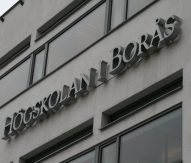
Digital fingerprints used in cybersecurity
Patterns hidden in every digital photograph and video frame, image fingerprints, are being applied in social media, mobile authentication and criminal forensics.
A ten megapixel camera sensor (ten million pixels), for example, can vary in how it measures light, which it turns into a digital signal. The imperfections in a pixel can then leave a unique fingerprint, known as sensor pattern noise, on the images it creates.
Extracted fingerprints, however, compromise the original images and thereby hinder large-scale sensor pattern noise applications due the extensive storage space required.
In the UK, however, a research and industry consortium named DIVeFor has already proved the worth of sensor pattern noise technology in criminal forensics by helping police make the first ever conviction using image fingerprints.
Professor Chang-Tsun Li of the University of Warwick, UK, led the Horizon 2020-funded project in 2014, a major focus of which was developing multimedia sensor pattern noise extraction technologies.
This year, Li founded the IDENTITY research consortium with funds from the Marie Skłodowska-Curie Actions pillar of Horizon 2020. As an international effort, IDENTITY combines industry and academic partners from 12 European, Asian and American countries, as well as senior forensic police as advisors.
Li said: “On this project we are not only trying to identify devices, but we also want to use biometric techniques to identify people through physiological and behavioural traits.
“No matter if you are going to identify devices or identify people, the underlying, enabling technologies are similar — it’s computer vision, machine learning and pattern recognition. Therefore, whatever technique we develop for device identification can potentially be fine-tuned or modified to serve the purpose of people identification, or vice versa.”
The total EU contribution to this project is €2,025,000. Click here for more information.




